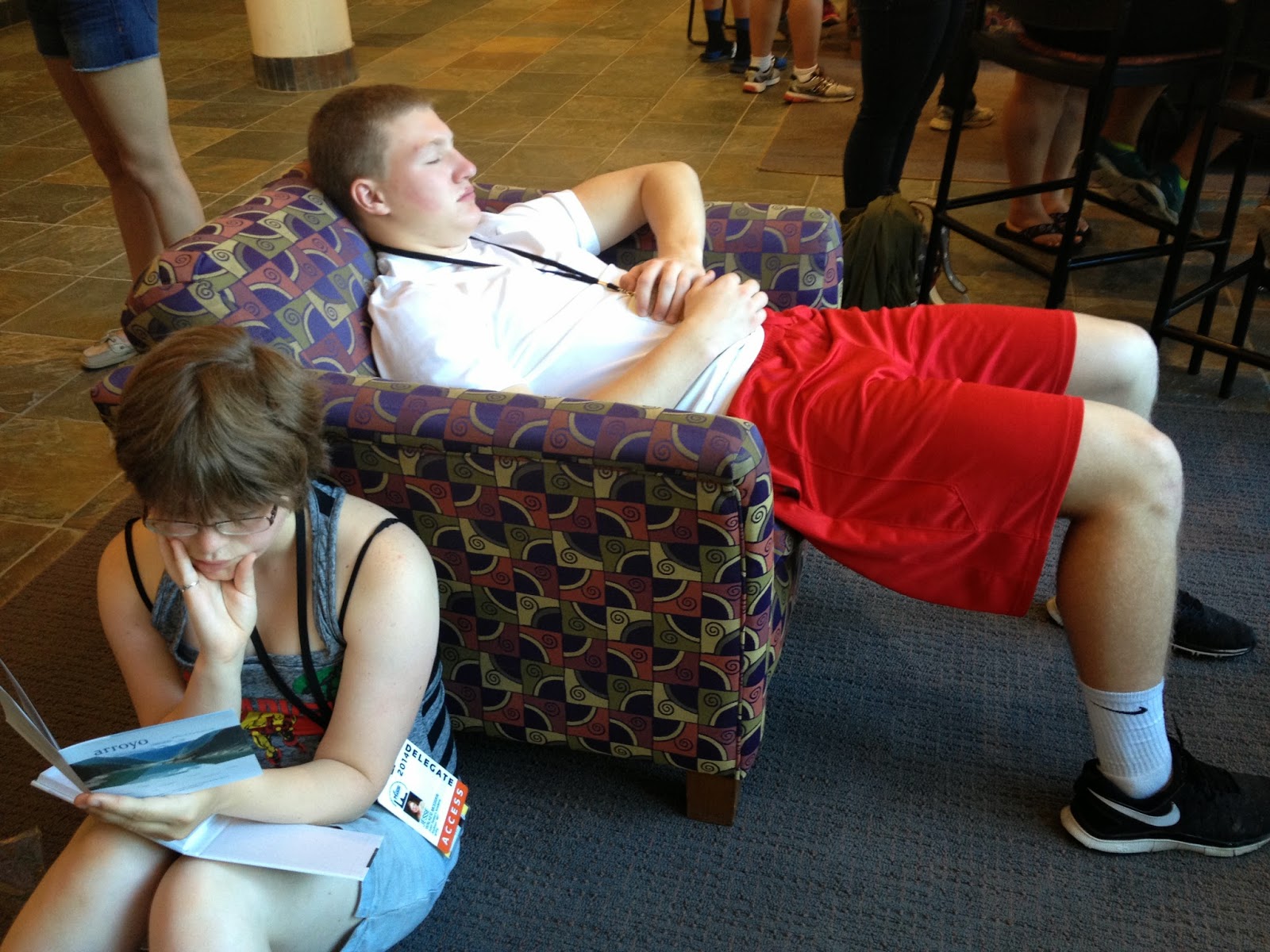Thursday started with a presentation by Amy Takayama-Perez on the College Admission process, advice for submitting a good college application, and information on college credit and application and scholarship benefits available to WYSE graduates - valuable information I used for my own college-bound kids.
After hearing from Ms. Takayama-Perez, Delegates split from their color groups to meet with Jerry Barney and his staff at "Our Task" - an exercise geared for youth to help them understand the global ecological threat from current practices and to start to envision a different way of living that's ecologically sustainable.
Here, the Delegates use the "airplane" exercise to build familiarity and trust prior to openly discussing the problems of the world.
Everyone should google these two speeches by Severn Suzuki and Birke Baehr on YouTube. Very inspirational!
Here, Delegates started working in small groups to identify the most pressing global ecological challenges.
We broke for lunch and then heard a great presentation from the EPA Administrator, Gina McCarthy. She's a great, plain-spoken speaker with an amazing command of the facts.
Returning to the Our Task exercise, Gerry Barney, the author of the Global 2000 Report to the President on sustainability, gives the Delegates his perspective on the problems of our unsustainable consumption. See his amazing bio here: http://www.geraldbarney.com/AboutPage.html. What an honor to have met him!
Next, the Delegates were encouraged to come up with a "Plan B" - to craft a plan for a different way of living in harmony with the earth's resources and carrying capacity.
Art as well as text was encouraged.
Finally, the Delegates gave a short presentation on their group's Plan B and they critiqued each and voted on the one they liked the best.
After all the work and hard thinking that went on at the Summit, the Delegates finally got the chance to cut loose at the gala. What a fine looking bunch!
On the way to the Gala, we stopped to take a group picture at the statue of George Mason.

























































